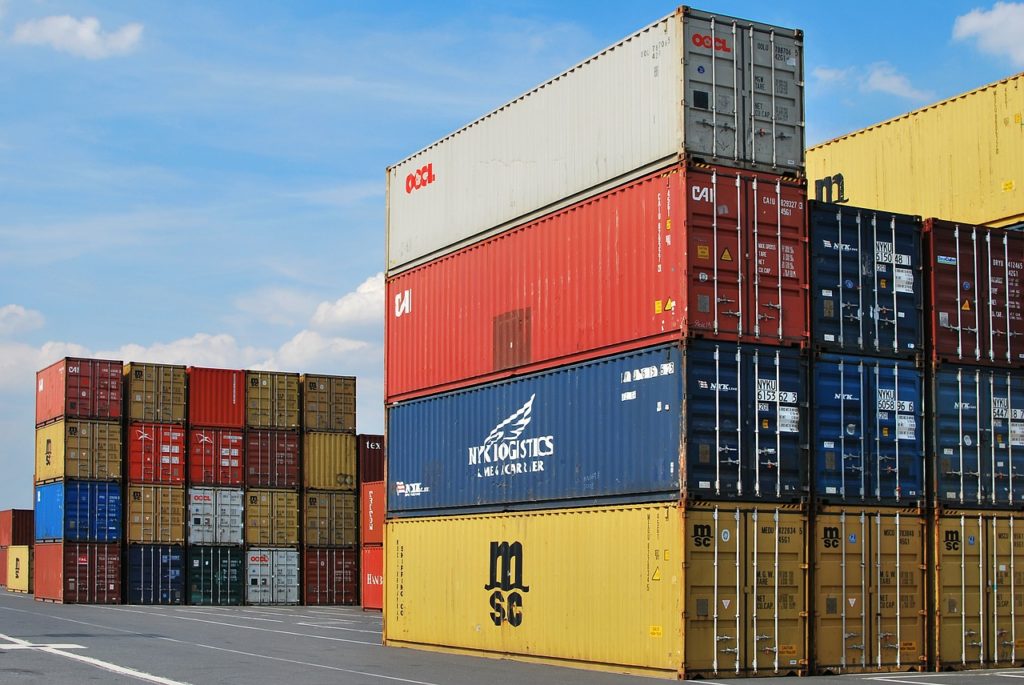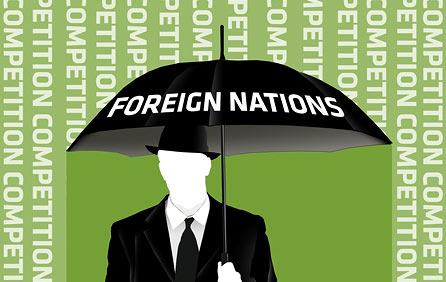
Trade is a key takeaway in globalisation, it works as an engine to the economic system. Trade can be defined as the exchange of goods and services, but if we talk about international trade, there is more going on than just an exchange of things among countries. There are interests and political situations in between that could make trade easy or complicated.
The world trade is very complex but not impossible to understand. In the earth system, there are patterns that give us the opportunity to identify something that’s going to happen like the weather. Similarly, patterns are also a thing in world trade.
The general pattern in international trade is that developed countries have more participation than developing countries. This means that there is a certain dominance on the exportation of goods and services. Nevertheless, this situation has changed a little over the past few years since the developed countries are no longer having a greater share in trade. Emerging economies like China, Brazil, India and South Korea, are a great example.
To put this into perspective it would be good to talk about the so-called trade war. The president of the US has complained about the unfair trades with different countries, especially with China. The problem here is that the US is importing more things from China than the ones the country exports -this is called trade deficit- which could cause unemployment. In order to fix this, Mr Trump has decided to raise tariffs to the Chinese products.

When a trade agreement is negotiated, countries try to regulate this trade by adding quotas, restrictions or tariffs depending on their interests. Sometimes these trade barriers turn to something called protectionism. This is what could possibly be happening with the US because, according to the president, raising a tariff might lead to consuming national products instead of foreign due to the increasing cost of these. Canada and Mexico have gone through the same with the US which resulted in the renegotiation of the North America Trade Agreement (NAFTA).
Protectionism might seem an actually good option because doing it that way assures the creation of jobs, but it also affects lots of people when it happens. It is a double-edged sword. For example, the imposition of tariffs to Chinese products has made the country take action and attack the same way. This retaliation could affect companies that need the product, forcing them to elevate the costs to compensate the lost, which eventually affects consumers. What a vicious circle, right?
What about Latin America, Sub-Saharan Africa and Southern Asia? Are they improving its trading relationships? Yes, they are improving but not as good as in developed countries. The main issue here is that their economies are mostly agricultural-based and in this kind of economy there is a constant fluctuation of the prices since it is not possible to have more than two or three harvests a year (sugar for example). Also, the problem of corporations moving to these countries and paying low wages along with the deterioration of the environment caused by the lack of protection, makes them more vulnerable.
Even so, the negotiation of agreements has -somehow- benefited least developed countries (LDCs). For example, through the Everything but Arms (EBA) initiative, African countries have the opportunity to export their goods to the EU without tariffs. Another arrangement to favour LDCs is the Generalised System of Preferences (GSP) which lowers tariffs to those countries considered.
So far, we’ve talked about how international trade works, patterns, conflicts and agreements. But there is still something missing regarding the global trade: Transnational Corporations (TNCs).
According to the United Nations Conference on Trade and Development (UNCTAD) “Transnational Corporations are incorporated or unincorporated enterprises comprising parent enterprises and their foreign affiliates. A parent enterprise is defined as an enterprise that controls assets of other entities in countries other than its home country, usually by owning a certain equity capital stake.” What does this mean? These corporations are in more than two countries, which enables them to create giant networks internationally. Imagine the power that these TNCs have, to be able to move across borders and reach foreign markets.

Nestlé is an example of a TNC. This Swiss transnational is the world’s largest food and drink company founded in 1866. It operates in 81 countries and sells its 10 000 different products in 189 countries. Generally, Nestlé chooses a country to operate by analysing the strength of the market and the need for investment, that’s what defines its spatial organisation. However, there are other reasons like the exploitation of resources, taxes and the low cost for production. For example, Nestlé is one of the major bottled water producers in Mexico (and the world), so it is obvious that they need water to do it and not only for bottled water but also for its different plants nationwide, thus they tend to install in places where this natural resource is abundant causing sometimes water shortage in nearby communities.
Nestlé is always doing research to develop new products by understanding the people needs. This has led to the incursion of not only food and beverages but also in other categories like pet food. As you can see it is continuously one step ahead based on world trends. When it comes to production, Nestlé is constantly optimizing the efficiency of their plants, and renewing their strategy according to the current market. Regarding the marketing, they are really good at understanding the culture of a place and by doing so they find a way to connect their products to society encouraging consumers to accept a foreign company.
As you can expect, TNCs have environmental and social impacts on countries. A few weeks ago, Green peace exposed the companies that contribute to a great scale to the plastic pollution and Nestlé is the third one in their list. There are also social impacts since companies are a great competition for local ones.
Geographically speaking, the global systems have shaped the world as we know it. Through the years we have elevated our ability to make connections to a greater scale which is reflected in what it’s been said in this article. Trade has had the power to move goods that some decades ago were impossible to move like bananas from Colombia to the EU, or technology. It is true that trade couldn’t have done it by itself, but now you know how the systems interrelate and the possible outcomes of every decision.
Having understood another piece of globalisation and global systems, can you think about something related to international trade that has changed or improved your life?
Frequently Asked Questions
What is international trade, and why is it important for countries?
International trade involves the exchange of goods and services between countries. It is important because it allows countries to access a wider range of products, boost economic growth, and create jobs.
How do trade agreements facilitate international trade?
Trade agreements establish rules and reduce trade barriers, such as tariffs and quotas, making it easier for countries to trade with one another.
What are the benefits of increased access to global markets for developing nations?
Access to global markets can help developing nations diversify their economies, attract foreign investment, and improve living standards for their citizens.
What role does the World Trade Organization (WTO) play in regulating international trade?
The WTO sets rules for international trade, resolves trade disputes, and promotes fair and open trade practices among its member countries.
How can countries balance the benefits of international trade with protecting domestic industries?
Countries can strike a balance by implementing trade policies that support domestic industries while also participating in global trade to benefit from comparative advantages.
